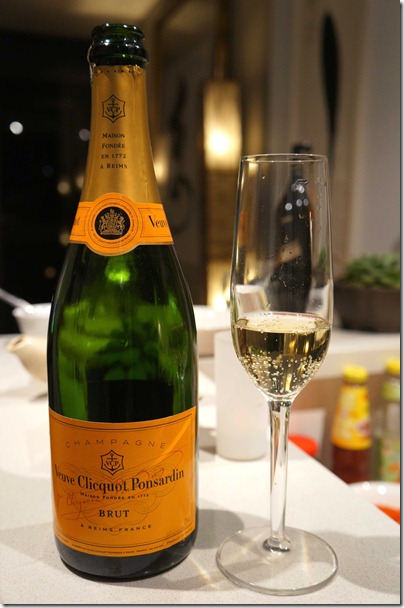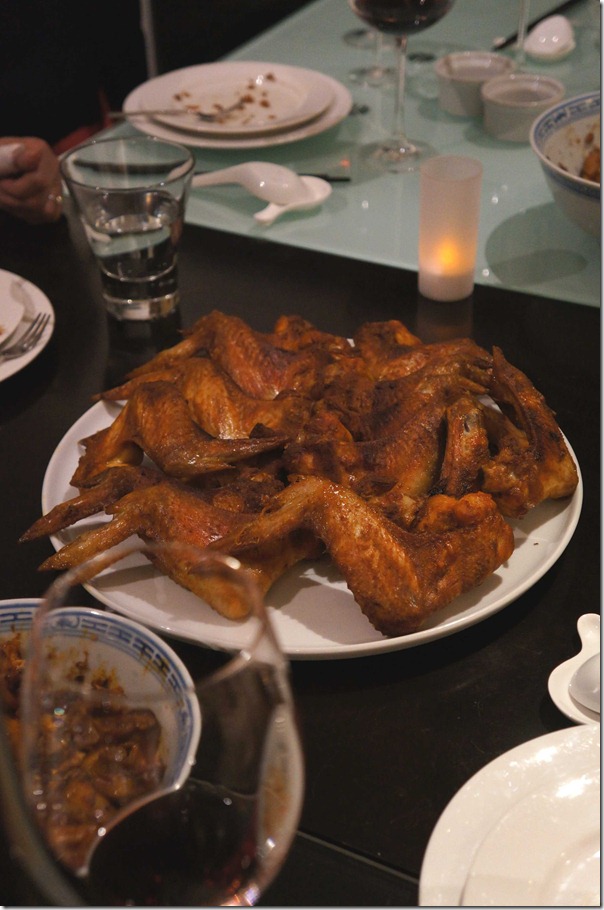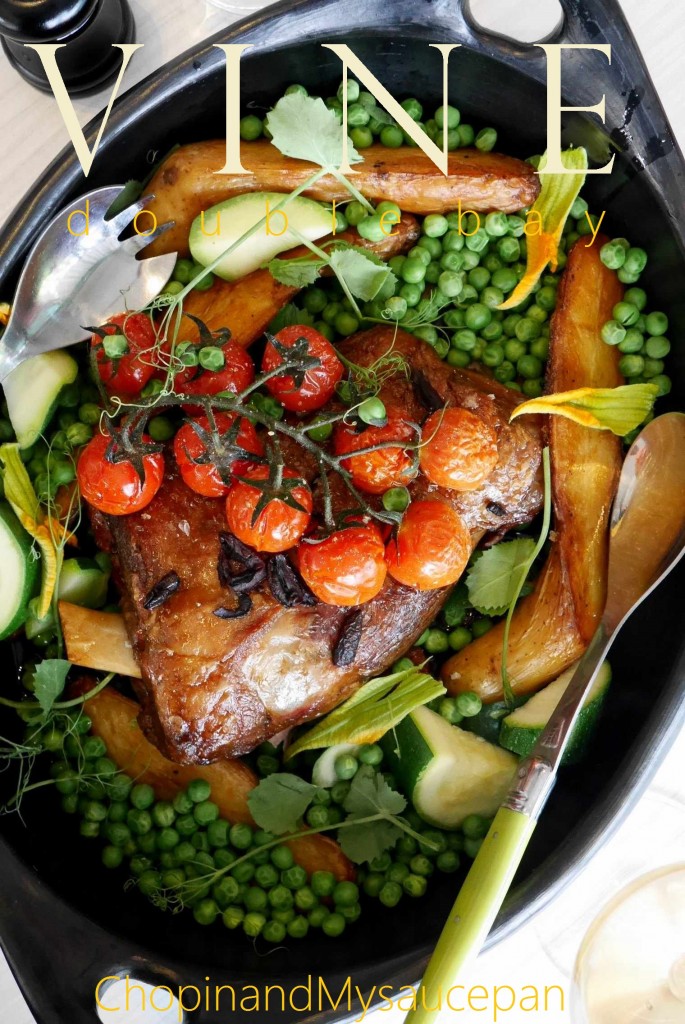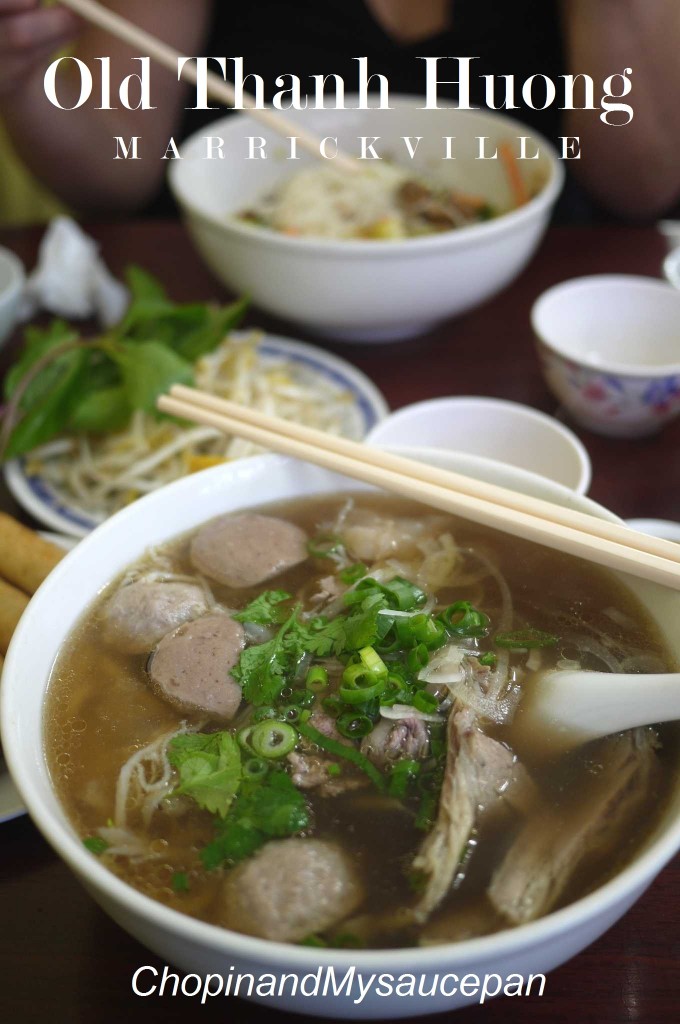
Chilli mud crabs - Did this iconic dish originate from Malaysia or Singapore?
“In an increasingly transient world, I believe the origins of food are becoming less relevant although I can appreciate why some food lovers would want to lay claim to the roots of its beginning. There is nothing wrong in having a strong sense of national pride for one’s own national cuisine. Having an appreciation for food culture and its origins is part of enjoying the taste of food in itself.”
~ Chopinand, about the origins of food
~~~~~~~~o~~~~~~~~
“Why do you Malaysians put black sauce in every single thing you cook?” Mysaucepan quibbles.
“I mean, your fried hokkien mee is darker than black soot, for heavens’ sake”, she adds, digging into some Malaysian styled dishes which seem so different to what she is used to when growing up in Singapore.
“Well, it’s better than dumping tomato sauce into every one of your dishes”, I retorted.
“I mean, how can you Singaporeans possibly eat wonton noodles drowning in tomato ketchup and add sweet black sauce to a savoury dish like char kway teow, hello?” I said as I visualise Singapore’s interpretations of what I am used to while growing up in Malaysia.
Yes, the age-old friendly food fight between Malaysia and Singapore is well and truly alive in our household too. Not only do we occasionally banter about a particular dish that can be so different in these two neighbouring countries, we sometimes debate over the origins of certain dishes.

Dinner table setting for our chilli crab party tonight
“Chilli crabs originated from Port Klang in the 1950s even when Singapore was part of Malaysia, so there!”, I added, as I try to fan her fire a little more, knowing that Singaporeans are very proud of what they claim “Singapore chilli crabs” to be one of their national dishes.
“Bollocks, we improved and transformed this dish into what is popularly known today as Singapore chilli crabs the world over”, she proudly proclaims.
“Oh well, whatever, you guys were once Malaysians anyway before your independence in 1965” I gleefully teased, knowing how Singaporeans generally dislike to be conveniently lumped together with their seemingly less progressive neighbours.
“Besides, you married one, so you must love Malaysia and its food then!” I laugh out loud as this food fight takes on its usual degenerative path.
In 2009, Malaysia’s Tourism Minister Datuk Seri Dr Ng Yen Yen ignited a heated debate with neighbouring Singapore when she claimed that nasi lemak, laksa and bak kut teh are dishes that are uniquely Malaysian and are synonymous with Malaysia’s identity but they had been “hijacked” by other countries.
“We cannot continue to let other countries hijack our food. Chilli crab is Malaysian. Hainanese chicken rice is Malaysian. We have to lay claim to our food”, she boldly told media reporters.
Not surprisingly, her claims struck a raw chord with food lovers from neighbouring Singapore, who are equally passionate about food, its origins and authenticity.
When Madam Cher Yam Tian heard that Malaysia was trying to lay claim for the origins of chilli crab, she got angry. “Everyone in Singapore knows that I was the one who created this dish and I’ve been using this recipe for the past 50 – 60 years. I am angry but I am going to ignore what the Malaysian tourism minister said”, she told her friends.
In the 1960s, Singapore chef Hooi Kok Wai, who started Dragon Phoenix Restaurant, re-invented the dish. Instead of using bottled chilli and tomato sauce, he used lemon juice, vinegar, sambal and tomato paste in his gravy. He also topped the dish with egg white, to give it a smoother texture. Since then, Singapore is proud to proclaim the dish to be Singapore chilli crabs.

Succulents on our dining table
Many food bloggers from both Singapore & Malaysia came forth to voice their views and opinion about chilli crab.
While there are some vehement claims about its origins, there are also more measured discussion and comments on the subject from both sides.
The question is this – can a country claim a particular food as being uniquely its own in terms of its origin, tastes and flavours. And if so, what is the real purpose and objective of doing so?
To find out more about the origins of food, and chilli crabs in particular, I am hosting a chilli crab dinner party tonight.
Among my dinner guests tonight are two medical specialists, Dr C and Dr P who were both born in Malaysia and read medicine and surgery at the National University of Singapore in the 1950s. Ironically, this university was first called University of Malaya when it was first formed on 8 October 1949 when King Edward VII College of Medicine and Raffles College were merged.
(Refer to A brief history of Malaysia and Singapore at the end of this blogpost below.)

Chinese roast pork belly - surely this dish originated from China
According to Dr C and Dr P, chilli crabs were already being served at open air restaurants in Singapore and all over the peninsula of West Malaysia in the 1950s. They recall that chilli crabs were very popular in Port Klang, being the main trading port located in the west coast of Malaysia in the Straits of Malacca.
This is because fishing boats would arrive at the port and unload its daily catch of seafood. Hence, restaurants began operating its business around Port Klang, serving up all kinds of seafood, including its own brand of chilli crab.
Like every dish, chilli crab is prepared slightly differently in different places throughout Malaysia.

Veuve Clicquot Ponsardin
When Singapore gained independence after its split from Malaysia in 1965, the country embarked on a rapid nation building process. Its continuous efforts in upgrading its infrastructure, public transport, health and education systems to build its human resource capabilities propelled Singapore onto the world stage. Singapore has also been successful in branding and selling its attractions to the world as an open and progressive economy, attracting huge levels of foreign investment to its shores.
It is the second busiest seaport in the world behind Shanghai. Long been a sticking point with the government, world-class casinos have began to operate in Singapore with the opening of the Marina Bay Sands. But using dramatic architecture is just one way to boost its tourism industry. Singapore has also managed to contract the Formula One Singapore Grand Prix, positioned itself as a major financial and administrative hub in South East Asia and attracted world-class chefs and hospitality businesses to its hotels and resorts.
Singaporeans are very proud of their local food and cuisine, perhaps rightfully so since it is a very small island nation in terms of population and land mass. With a relatively smaller range of social activities, Singaporean food lovers are even proud to proclaim that eating is Singapore’s national past time. Central to its tourism initiative, therefore, is a strong and focused strategy to market its cuisine and popular dishes which have Chinese, Malay and Indian influences.

1994 Dalwhinnie Shiraz
On the other hand, Malaysia is relatively more laid-back in its approach towards an integrated tourism strategy such as Singapore. Whilst Malaysia is also a melting-pot of cross-cultural Chinese, Indian and Malay cuisine, the marketing strategy of its food culture is less aggressive and focused.

My version of Malaysian chicken wings - baked with curry powder and turmeric
Although Malaysia loosely declares nasi lemak to be its national dish and popular breakfast staple, its government and people generally are not as enthusiastic as their Singapore counterparts in branding certain dishes to be uniquely originated from Malaysia.
This could be a reason that I see Malaysia’s tourism strategy as being reactive rather than Singapore’s proactive approach. If you have never strongly promoted the key attributes of your country compared to your neighbours, be it foreign investment, tourism or food, then you are likely to be left behind when you finally decide to do so.

My version of Malaysian chicken wings - baked with curry powder and turmeric

Giant live mud crabs
I doubt it is Singapore’s intention to “hijack” any of Malaysia’s cuisine, if at all chilli crab can be considered uniquely Malaysian.
I think the branding of chilli crabs, Hainanese chicken rice and yue sang as uniquely from Singapore has more to do with Singaporeans’ love for good food and a stronger sense of national pride. It is a clever marketing initiative aimed at bolstering Singapore’s tourism dollars rather than trying to initiate a food fight with Malaysia.
Malaysia is more likely to win a food fight with Singapore if they initiated a campaign to brand its so-called national dish “Malaysian nasi lemak” since the ethnicity of this Malay dish favours Malaysia.
But whether it’s a lack of marketing initiative or a perceived lack of necessity to do so, Malaysia’s tourism campaigns are less aggressive and strategic than Singapore’s.

Huge claw of a mud crab
In an increasingly transient world, I believe the origins of food are becoming less relevant although I can appreciate why some food lovers would want to lay claim to the roots of its beginning.
There is nothing wrong in having a strong sense of national pride for one’s own national cuisine.
Having an appreciation for food culture and its origins is part of enjoying the taste of food in itself.

Simmering onion & chilli paste with tomato puree
Having lived in Sydney for a long time has enabled me to take a step back in examining the culture and mindset of both Malaysians and Singaporeans.

Adding cleaned mud crabs to the chilli sauce
I believe Singapore’s relatively more egalitarian and meritocratic society as well as its transparency in government give its citizens a deeper sense of unity and patriotism. On the other hand, Malaysia’s pro-Bumiputra policies that give special privileges to its Malay citizens ahead of minority Chinese and Indian citizens are divisive and counter-productive.
Can and should the Italians claim spaghetti bolognaise as their national dish when legend has it that noodles were introduced to them by the Chinese?

Crabby goodness under the shells

2010 Dr. Loosen Riesling & 2009 Lawson's Dry Hills Gewurztraminer
Over the past few centuries, migrants all over the world have introduced their own style and brand of food to their adopted motherland which have proven to be so popular, they become part of the fabric of these new communities. Surely this cannot be a bad thing.
Vietnamese pho, laksa, pizza, Korean bibimbap, Japanese sushi, fish and chips are just a few types of food which are as popular as a good old Aussie style hamburger now than say thirty years ago.
On the same token, Indian migrants in Singapore and Malaysia have introduced fish-head curry to these countries where this dish is even less likely to be found in India.
Malaysia is my country of birth but I now call Australia home.
Am I annoyed or upset that Singapore could be seen as “hijacking” a dish that may have “originated” from Malaysia?
My answer is simple. Anyone can call any food anything they like and proclaim its origins. It means little because food in itself is subjective, prepared differently in different places and has varying degree of importance to different people.
Whether it comes from Singapore or Malaysia, frankly, I don’t give a damn coz I’m too busy slurping on my chilli crab fingers and enjoying the company of my friends tonight.
~~~~~~~~o~~~~~~~~
Chilli crabs
Ingredients
3 large mud crabs, well, washed and quartered, leave the shell whole
3 brown onions, diced and pureed
5 large red chillies, diced and pureed
600ml tomato puree
8 tablespoon of vegetable cooking oil
4 – 5 tablespoon Maggi chilli sauce
6 tablespoon light soy sauce
5 tablespoon sugar
Thumb size shrimp paste or belachan
1 teaspoon salt
1 teaspoon corn starch
Half to one cup of water
3 eggs
Shallots and coriander, julienned to garnish
Method
- Blend onions and chilli until it becomes a rough paste.
- Heat oil in a wok until smoking then add onion and chilli paste and stir until fragrant.
- Add the belachan and stir in the tomato puree, sugar and salt.
- Then add light soy sauce and water. Stir in the corn starch to thicken the sauce slightly.
- When the sauce is simmering, add the crab pieces and cook over high heat until the shell turns into a bright red / orange colour.
- Turn down heat to a gentle simmer and add in whole eggs and stir gently.
- Garnish the crabs with shallots and coriander and immediately serve hot.Serves 6 people
~~~~~~~~o~~~~~~~~

Malaysia or Singapore? This tasty crab doesn't care where you come from
A brief history of Malaysia and Singapore
Known as the Malayan Union (between 1946 – 1948), the states within this Union became the Federation of Malaya between 1948 and 1963, of which Singapore was one of them. Prior to this period, all of the Malay states including Singapore were colonised by British rule since 1874. Malaysia subsequently gained independence from British rule on 31 August 1957.
On 31 August 1963, Singapore declared independence from Britain and joined with Malaya, Sabah and Sarawak to as part of the Federation of Malaysia. Singapore’s leaders made this decision because they did not believe the British would deem this small island state viable due to lack of land, water and natural resources and hence be independent on its own. The first 2 years between 1963 and 1965 where Singapore was part of Malaysia were riddled with bitter disagreements and conflict. The Malay rulers insisted on a pro-Malay society where Malays were given special Bumiputera rights and privileged which still exist to this very day. On the other hand, the predominantly Chinese Singaporeans wanted a society where all citizens have equal rights and a system of ruling based on meritocracy.
Singapore’s economic and social development was painfully slow under Malaysian rule as the government vetoed many of its proposals. After so much ideological and social conflict between Singapore and Malaysia, the Malaysian parliament voted 125 to 0 to expel Singapore as a state from Malaysia.
On 9 August 1965, Singapore gained independence as the Republic of Singapore whilst remaining within the British Commonwealth. Since its independence, Singapore’s economic and social development has thrived and flourished under its founding Prime Minister Lee Kuan Yew.
Today, Singapore is one of the richest countries in the developed First World despite its lack of natural resources and land. According to the International Monetary Fund, Singapore’s GDP per capita ranking is the third highest in the world among 183 nations. In contrast, Malaysia’s GDP per capita ranking is languishing at 58 despite the country being rich in natural resources such as rubber, tin, palm oil and natural oil and gas.
~~~~~~~~o~~~~~~~~
So dear readers, does it matter to you the where the origins of a particular dish that you like came from? If so, can you share your thoughts about any debate on the origins of food with us?














































































































Good write-up and yes the eternal battle between Msians and Sg’s are legendary Did you know they claimed rambutans were theirs too? lol
Did you know they claimed rambutans were theirs too? lol
Dear msihua,
I believe Singapore was trying to market rambutan as Singapore lychee. I think Singapore is savvy in its marketing campaigns to try and boost its tourism industry. Strategic branding can yield benefits just like how Switzerland has branded Swiss chocolates when it does not even grow cocoa.
Mama Mia! Look at that crab and crispy pork belly. That would be heaven to me
Pingback: The debate about the origins of food – a futile food fight? | ChopinandMysaucepan « asianfoodeconomics
I’ve always called it Singapore Chilli Crab but then again, my mother is from Singapore and would call it that 😛
wow! i love that chili crab
Hahhahaa… What a touchy subject but I LOVE IT. Has to be said. And I agree, sometimes I don’t see the point of arguing over the “origins” of food. Because one, who can actually, really, really verify that? Two, I think food is meant to bring people together and when conversations like that get unnecessarily heated, it’s totally besides the point anymore. But great write up still. Really good read. And awesome recipe this goes in the books for one of my FAV dishes to eat of all time. Absolutely delicious will need to try your recipe out too!
Dear Winston,
I agree that arguing about food origins can be futile because in many cases, there are different variations of the dish and also ingredients may come from a different place. I say just eat and be merry.
Wonderful essay, and dinner! I love the wine pairings too.
Make dinner, not war! 😀
Wow…everytime that I come to visit you I am like “you sure know how to enjoy life”…wonderful…the crab just look delicious…if I only could get my hands in these crabs…yum! If I were there I would let you guys go back and forward with the topic and I would just concentrate in digging into the food heheheh!
Hope you are having a great great week
Dear Juliana,
I agree with you. I have no time to haggle over origins when I’m too busy eating, especially when it’s something like chilli crabs.
Holy cow, what a post! Out of all that, one line stood out.
“You Malaysians”
Now I have to tell you what I’ve had to do in our house. We have a rule that you and Americans are not permitted to be used side by side. Because I get the same thing.
Because I get the same thing.
“You Americans put so much sugar in everything.”
and don’t get him started on the politics.
Apart from that nonsense, I think this is a fantastic post and I have learned so much. I cannot wait to go out back and toss the crab pots in and make these chilli crabs.
I have no problem about food origins but I suspect anyone who lives away from where they were raised will have special memory food that awakens something inside when you eat it.
Dear Maureen,
I do find there is a fair bit of sugar in certain American recipes not to mention some of the standard portion sizes which can easily feed 2 – 3 people.
Sounds like Kanto (Tokyo) vs Kansai (Osaka) battle. Haha! But it was interesting to read – I actually didin’t know that “battle” part existed in Singapore and Malaysia. I wish I can eat and party like you. I always say that to my husband that you are having fantastic foodie life. LOL!
That’s what I love about food though– it’s so intricately tied into national pride and ethnic culture, hence all that passion burbling forth over the origin of a dish! Your verbal food fight with your wife cracked me up. You guys are adorable together.
I LOVE CHILI CRAB!! I don’t really care which country it’s from, so long as it’s still being cooked plenty.
Me too! Busy feasting on those crabs and licking the chilli crab gravy off my fingers. ;p
What an interesting post! (Thank you for the history lesson, too.) Debating about food origins is fun as long as no fork (or chopstick) throwing is allowed. I agree with you — national pride has a lot to do with it, and rightfully so, and the conclusions you came up with are spot on. Embracing our similarities and differences enhances the experience, especially over a glass of wine and great food. Where I live, the debate centers on BBQ.
Pingback: Dipping sauce and a little controversy: who knew chicken rice had such 'wow' factor - Australia news | World News, Politics, Economics, Entertainment,Sport,Business & Finance | Australia news | World News, Politics, Economics, Entertainment,